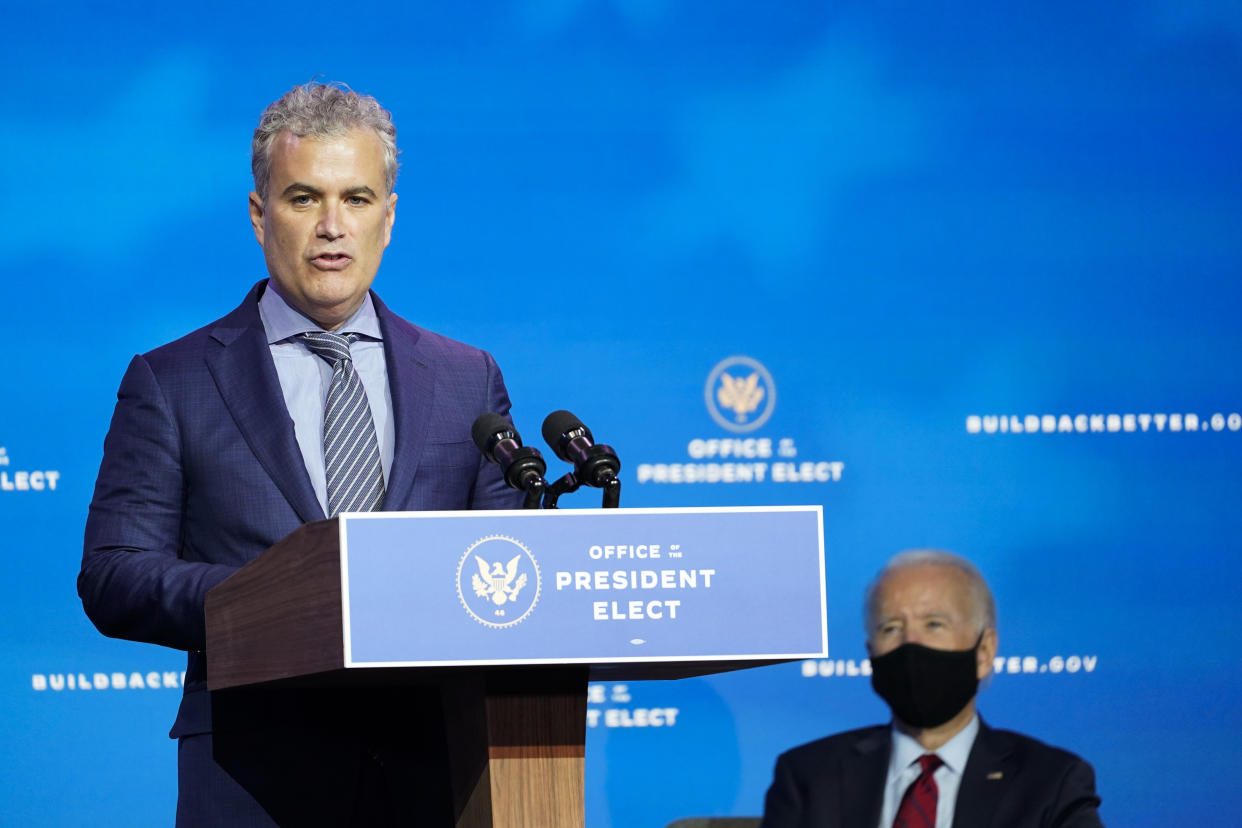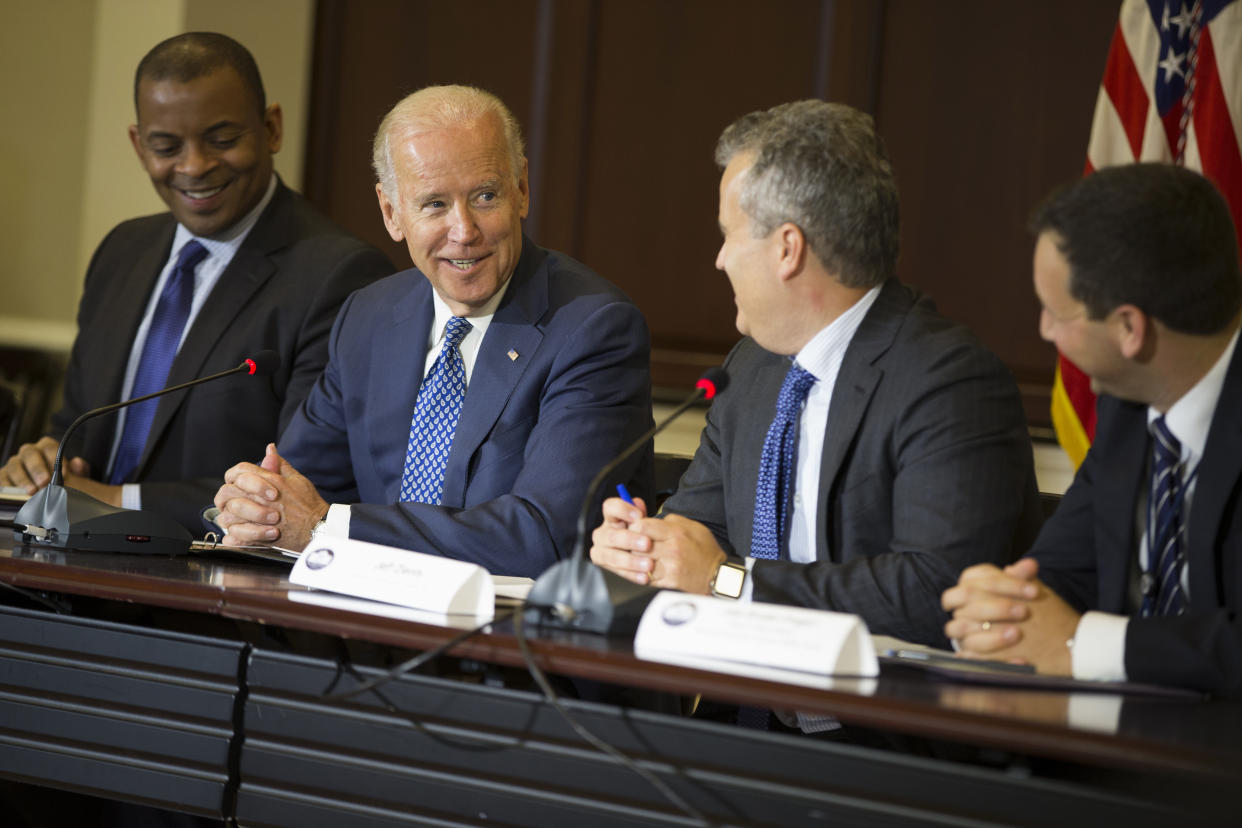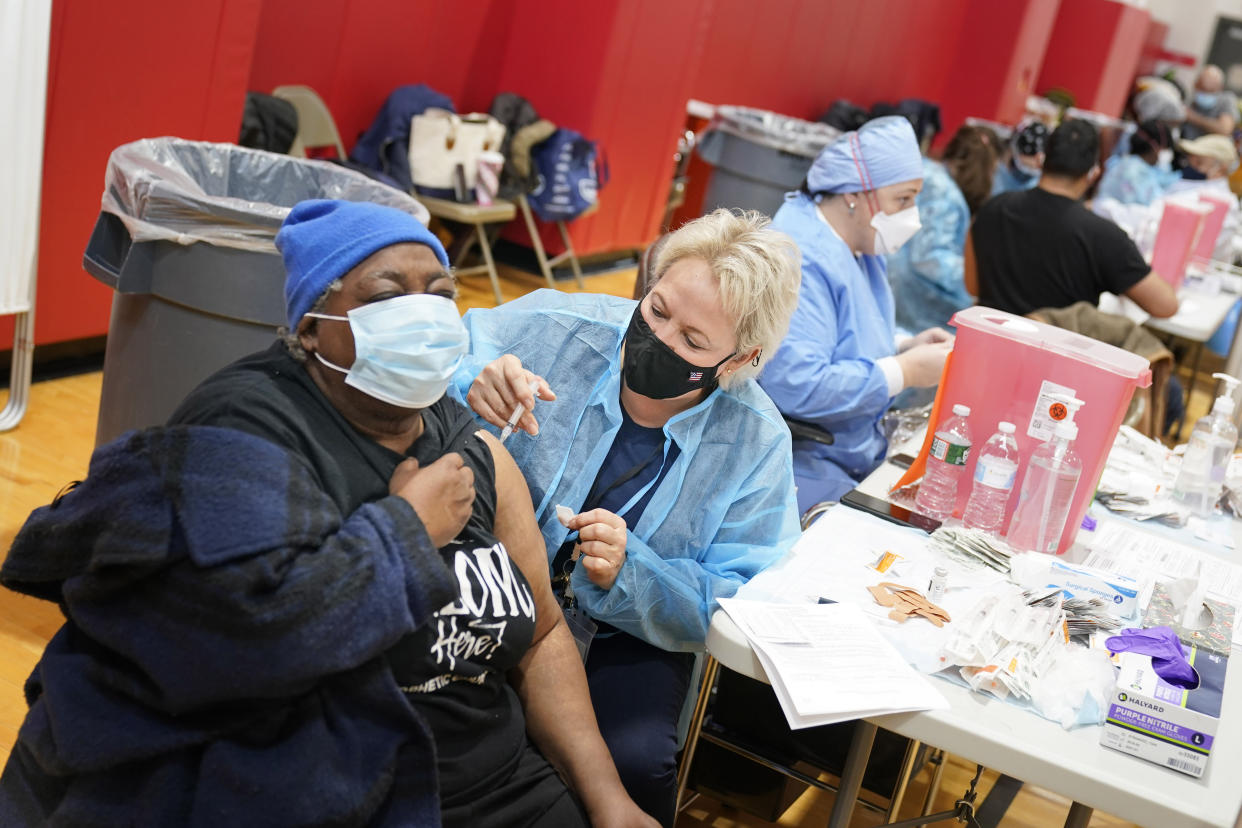Biden's COVID czar hits the ground running — but the race keeps getting harder

It’s been called the “hardest job” in Washington right now — and the wealthy business executive who just took over has been touted as President Biden’s “Mr. Fix It.”
But in his new role as coordinator of the White House COVID-19 task force, Jeff Zients says he is now facing a more daunting challenge than even he realized.
“What we’re inheriting from the Trump administration is so much worse than we could have imagined,” Zients told reporters Wednesday night, criticizing the "lack of cooperation" from the previous White House as an "impediment." “For almost a year now, Americans could not look to the federal government for any strategy, let alone a comprehensive approach to respond to COVID, and we’ve seen the tragic costs of that failure.”
A source with direct knowledge of the Biden administration’s COVID-related work painted an even bleaker picture on Wednesday. “There is nothing for us to rework,” the source told CNN. “We are going to have to build everything from scratch.”
The situation represents “just further affirmation of complete incompetence” on the part of the previous administration, another source told CNN.

Yet experts are starting to question whether Biden’s new COVID czar, however competent, is aiming as high as he should be.
On Wednesday, Zients told reporters that Biden’s oft-stated vaccination goal — administering “100 million shots” during his first 100 days in office, or 1 million shots per day — is both “ambitious and achievable.”
It certainly seems achievable. According to Bloomberg’s COVID-19 vaccination tracker, the U.S. is already administering an average of 912,000 doses per day. On Jan. 20, the day Biden was sworn in as president, 1.6 million doses were recorded.
To be clear, Biden’s goal isn’t 1 million completed vaccinations per day, which would translate into 2 million daily injections. Both of the vaccines approved for use in the U.S., made by Pfizer and Moderna respectively, require two doses administered three or four weeks apart.
So hitting Biden’s target would simply entail adding about 90,000 daily doses to the current average and sustaining that pace for the next three months or so.
It would also leave more than 260 million Americans unvaccinated by the end of April, including more than 180 million adults.
Is that really ambitious enough?
On one hand, it’s possible that roughly 50 million full additional vaccinations in the next 100 days — on top of the roughly 15 million first shots and 2 million second shots administered so far — could help turn the tide of the pandemic. The latest forecasting models suggest that cases should plummet this spring as increasing levels of vaccination-based immunity layer onto America’s ever-growing foundation of infection-based immunity, making it harder and harder for the virus to spread.
In fact, a new forecast from the Institute for Health Metrics and Evaluation (IHME) at the University of Washington predicts that cases have already peaked and will fall to less than 6 percent of their current level by May 1 (due in part to warming weather). That would be the equivalent of about 11,000 cases per day, nationwide.

Yet even assuming the IHME’s trajectory is roughly correct, the epidemic won’t disappear if U.S. vaccination tops out at 1 million daily shots. The current level of crisis — 200,000 daily cases, 3,000 to 4,000 daily deaths, 100,000 Americans hospitalized — may not persist. But the present will still feel precarious, the future uncertain.
Right now — again, at a time when an average of more than 900,000 shots are being administered each day — registration websites are crashing, appointments are being canceled, states are receiving fewer doses than promised and officials are warning that supply may soon run out. All while less than half the 36 million doses distributed to date have actually been administered — around 17 million.
It’s a confusing, contradictory mess.
Zients should be able to resolve some of these issues, especially the logistical snags known as “last mile” problems. As former George W. Bush chief of staff Josh Bolten once put it, “I know Jeff well enough to know that if anybody could bring rationality and good judgment to an obviously chaotic situation, Jeff is the guy.”
A graduate of St. Albans prep school and Duke University, Zients, 54, has a career behind him — first in the private sector, then in government — characterized by optimization of opportunity and precise execution. In middle school, he unsentimentally sold off his entire fantasy baseball team for $25; he later off-loaded his childhood baseball card collection for more than a thousand times that sum.
Fresh out of college, Zients honed his cost-benefit instincts as a management consultant at Bain & Co., Mitt Romney’s old firm, then worked with D.C. entrepreneur David Bradley to expand the Advisory Board Co., a health care research firm, and its spin-off, the Corporate Executive Board Co., from 100 to 1,000 employees. He eventually helped take both firms public.
During Zients’s first week on the job, he cut a six-person product research team in half and reassigned one person elsewhere. “I’ve never seen a 25-year-old take control of a situation like that,” Bradley once told the Washington Post. “Jeff’s force of mind is to reason your way to the exact right answer.” By 2002, Zients was the 25th-richest American under 40; a decade later he was worth an estimated $200 million.

Zients’s first role in government was created just for him: United States chief performance officer and deputy director for management of the Office of Management and Budget under President Barack Obama. His assignment, according to Obama, was to help “streamline processes, cut costs and find best practices throughout” the U.S. government. Zients was so zealous about sniffing out inefficiencies that he became “dismissive about Congress,” as one former congressional staffer on the Senate Finance Committee told the Post, and ultimately lost out on a promotion to U.S. trade representative.
“I think in his view he was a management guru: ‘I know how to make things work better — and what does Congress know about that?’ ” the congressional staffer said.
Despite this setback, Zients soon found the ideal showcase for his analytical abilities: rescuing Healthcare.gov, the much-maligned Obamacare portal. He did management-consultant things like putting one contractor in charge, demanding half-hour updates on major technology changes and insisting that “the four teams working on the project — technical, policy, communications and operations — establish weekly goals each Sunday, assign an individual responsible for each goal and evaluate them through a color code: green for accomplished, yellow for underway and red for no progress,” according to the Post. The fixes worked, patients were finally able to enroll and Zients was rewarded with a new job as Obama’s top economic adviser and “ambassador to the business community.”
Post-Obama, the business community welcomed Zients back with open arms; he spent two years on Facebook’s board and audit committee before serving as CEO of the Cranemere Group, a private equity firm, and co-founding a D.C. bagel chain. Progressives have criticized his ties to Wall Street.
Still, Zients is a proven commodity — “the ultimate firefighter on these jobs,” as Obama chief of staff Denis McDonough once described him. In theory, he is equipped to put out many of the vaccination-related fires that Trump left behind: streamlining distribution, rationalizing allocation, strengthening communication, improving predictability and ultimately providing states with the kind of logistical transparency they need to make the process easier for residents who just want to know how and when they can get vaccinated.

Yet that may turn out to be relatively low-hanging fruit — and it’s unclear how much further Zients can go.
To fully implement Biden’s national COVID-19 plan, for instance, Zients wants Congress to pass the administration’s sweeping new $1.9 trillion rescue package, which includes $160 billion for COVID-19 vaccination, testing, therapeutics, contact tracing, personal protective equipment and more. “We do need Congress to act and act quickly,” Zients said Wednesday.
The problem is that even moderate Senate Republicans have already expressed reservations about the package — and with an impeachment trial looming, a divided Congress might not sign off on big legislation as quickly as Zients would like, or at all. “We just passed a program with over $900 billion in it,” Utah Sen. Mitt Romney told reporters this week. “I’m not looking for a new program in the immediate future.”
Then there’s the question of whether Zients really plans to settle for 1 million shots a day. If he does, then Biden’s first 100 days will be devoted mainly to immunizing America’s 50 million seniors and some other high-risk individuals. The nation’s 55 million essential workers would be next in line, starting in May. The general population might have to wait until summer — months later than Dr. Anthony Fauci, America’s top infectious disease expert, predicted as recently as December. And instead of “two, three, four months to get everyone vaccinated who wants to be vaccinated,” as Fauci estimated at the time, it would take until well into 2022 to hit the 85 percent uptake threshold that Fauci says is necessary to end the pandemic.
In this scenario, cases might still flatline earlier, for the reasons listed above. Or perhaps not: By the spring, more transmissible variants may outrun the vaccines, triggering another surge. Either way, most Americans would have to remain in pandemic mode — with all the anxiety, isolation and mask wearing that entails — for much longer than expected. They simply wouldn’t be getting vaccinated anytime soon.
Or maybe Zients isn’t planning to settle for 1 million shots a day. Maybe he and Biden are setting a low bar on purpose. Maybe they’re really aiming for the 2 million to 3 million daily shots that experts say could effectively end the pandemic by September. After all, internal projections from the Trump administration showed that the U.S. could administer at least 170 million doses by the end of April. Meanwhile, Moderna and Pfizer have already pledged to deliver 100 million doses each by the end of March, and other promising vaccines — including a single-shot candidate from Johnson & Johnson — are in the pipeline.

To accomplish that, Zients will have to do more than fix the last-mile distribution problems that have been slowing vaccination so far. He’ll also have to hope that supply keeps pace and that no new bottlenecks emerge as companies work to scale up production. Much of that may be out of his control.
With these challenges in mind, Biden announced Thursday that he had invoked the Defense Production Act to boost the availability of doses and syringes. A few minutes later, a reporter asked the president if his vaccination goal was “high enough” given that it’s essentially “where the U.S. is right now.”
“When I announced it, you all said it wasn’t possible,” Biden responded. “Come on, give me a break, man. It’s a good start, 100 million.”
The problem for Zients is that when it comes to the pace of vaccination, three months of the status quo might not be good enough.
_____
Read more from Yahoo News:
